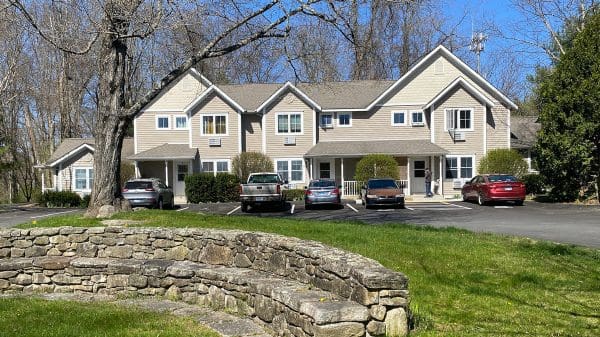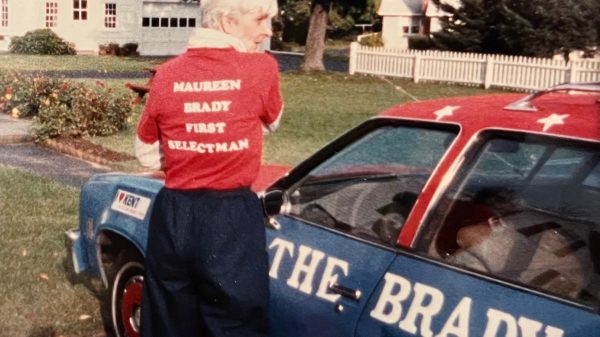KENT—How long funds should be allowed to sit unused in the five-year Capital Plan was a recurring topic at a recent annual town meeting.
The plan is amended annually to identify big-ticket items that should be addressed over a decade. While the second half of the plan is, by necessity, speculative, taxation for purchases and construction in the first five years starts with annual appropriations. At the end of five years, it is expected each project will be fully funded.
Sometimes, however, projects are funded and then, for unforeseen reasons, the agency that requested the money is not able to move forward. Because the funds cannot be used for any other purpose—unless the townspeople approve its reallocation—money can be marooned in the budget.
Park & Rec, for instance, currently has $100,000 for an Emery Park playground and $150,000 to repair the unused pool there, funds that resident Matt Winter suggested should be reassigned to a Master Plan for use of the parks.
This past year, the Board of Finance set guidelines for the selectmen to use in developing the Capital Plan, capping it at 15 percent of the town’s total budget.
It was stressed during the meeting that this is a guideline and not a policy—indeed, even after trimming $720,000 from this year’s requests, the selectmen recommended $2,987,836 in expenditures, 16 percent of the total budget.
“These are large expenses, and this is a way to make sure you have some say over these large expenditures,” said First Selectman Martin Lindenmayer. “It provides consistency in the regular budget.”
Lindenmayer said, “Some things reach the year of execution and are not executed. One thing we have to look at is how long do we let money sit there before we move it into the reserve fund or for another use. Can we reassign those funds to something else?”
He added, “We’re looking at other engineering projects we will need. Climate change is here and how do we deal with it? We want to reallocate money to what we really need and not have it sit there.”
Finance Chairman Nancy Odea Wyrick said the Board of Finance regularly reviews what has already been set aside.
“We don’t want taxpayer money sitting there,” she said. “It needs to be spent or go back to the town to reduce taxes.”
Resident Matt Starr also objected to funds being “piggy banked” in the budget and to the fact that funds put aside for roads and bridges are not specifically assigned.
“Why not take the money and use it where it needs to be used,” he asked. “It’s this game of getting the money from the taxpayers and not using it. You’re overtaxing the people of Kent.”
He suggested a two-year time frame for using the funds.
“I can’t argue with any of that,” said Lindemayer. “Money is sitting there unused. One thing we will do, we will have a construction calendar that you can see weeks before, so you know which roads and bridges we will be working on.”
An example of how the plan can change was found in the fire department’s request for equipment.
Costs for firefighting apparatus have been escalating at an “unreal” rate, according to Kent Volunteer Fire Department President John Russell and the replacement of Rescue Truck 8 is currently being budgeted for 2029.
It is hoped that, with inflation still a factor, the amassed funds will cover the projected $1,525,000 price tag, but the fire department has deferred funding for a second new truck until the second half of the plan in years 2030-2034.
The firefighters were asked if purchasing used fire trucks would save on costs, but Russell said that trucks, which are usually used for 20 years, change so dramatically that used vehicles “do not reach a reasonable level of safety and reliability. “
It was noted that Department of Public Works foreman Rick Osborn looks for used vehicles for the town fleet, but that competition for them has driven up prices. He recently lost a chance to purchase a used truck between his initial inquiry and a return call 45 minutes later.
As for hybrid or electric vehicles, Lindenmayer said they are not readily available at this time. Because the town purchases used vehicles, it is still tapping into older technology.
Lindenmayer said the most changes to the capital plan were in Park& Rec. Selectman Lynn Mellis Worthington, the selectmen’s liaison to Park & Rec, said funding for a basketball court at Kent Common Park was pushed into the sixth year, but that $25,000 for drainage improvements at Emery Park was reinstated. A splash pad at Kent Commons remains at $250,000.
Lindenmayer said the town has applied for a grant that could reduce the splash pad cost by $100,000.
Worthington said that $35,000 for a pickup truck to move recreation equipment around was moved into the second half of the plan.
Turning to town buildings, Lindenmayer said that plans are being developed for the use of Swift House, an ancient building owned by the town and currently unused because it does not meet code. A tour of the building to develop priorities is planned for Feb. 2.




























